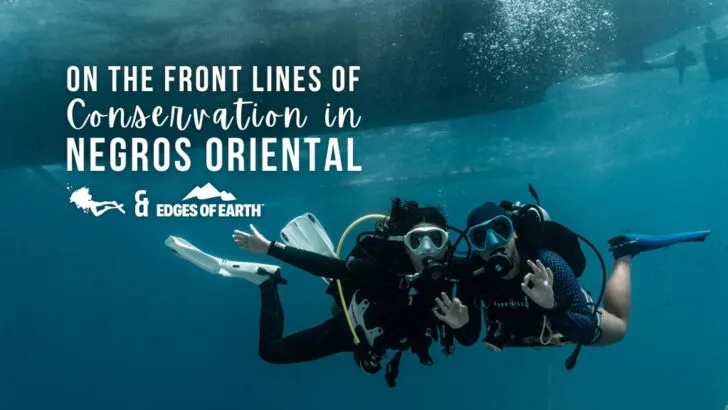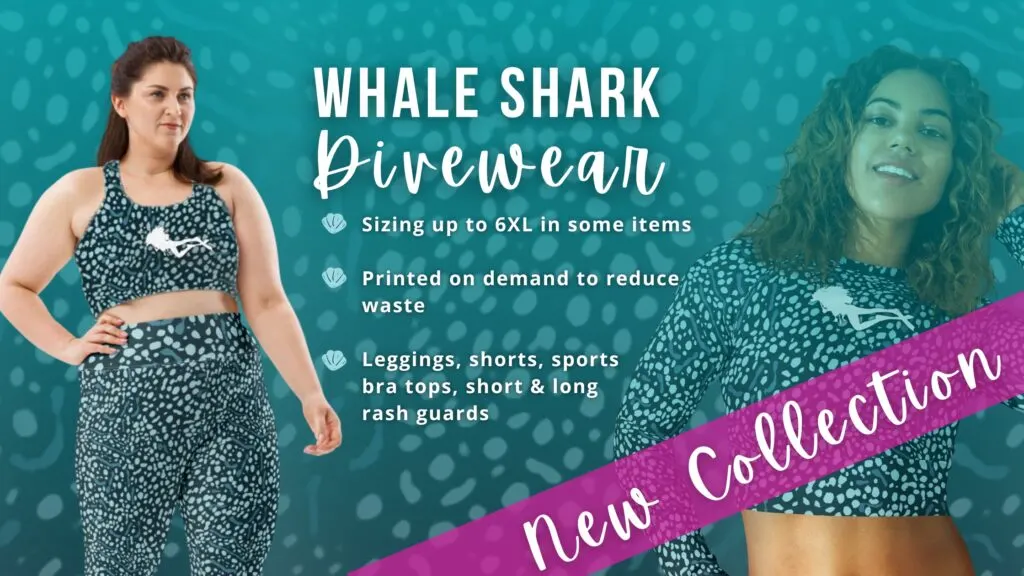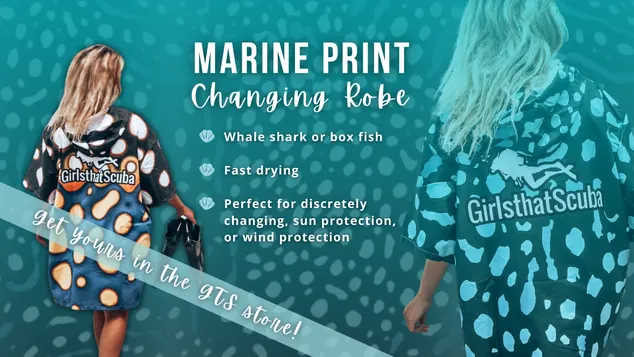This is part of a series of guest posts by Andi Cross, whose incredible expedition is telling dive stories from around the globe. Check out the previous story, and join us as she takes us to the Edges of Earth!
Our adventures thus far have had no shortage of incredible dive sites and epic vistas to match. While we’ve been blown away from what we’ve seen, we’ve been even more impressed by those we’ve met.
The Philippines was no exception to this sentiment. In Negros Oriental, we met some awe-inspiring women, whose conservation efforts, wisdom, commitment and passion spoke to the very heart of this expedition. And for one woman in particular, her passion was birthed from a Mangrove, of all places.
Preserving the Underwater Splendor of the Philippines
Known to be a dive epicenter, when you push past the heavily advertised tourism in the region, there’s a separate and entirely different underwater reality happening in the Philippines. These waters and ecosystems are under siege from illegal fishing practices, habitat destruction and marine pollution.
The destructive methods of cyanide poisoning and fish bombing have decimated large sections of coral gardens. This disrupts habitats and endangers species dependent on them. Overfishing – often facilitated by illegal, unreported and unregulated practices – further strains marine life. Eventually, this leads to a decline in biodiversity and ecological imbalance.
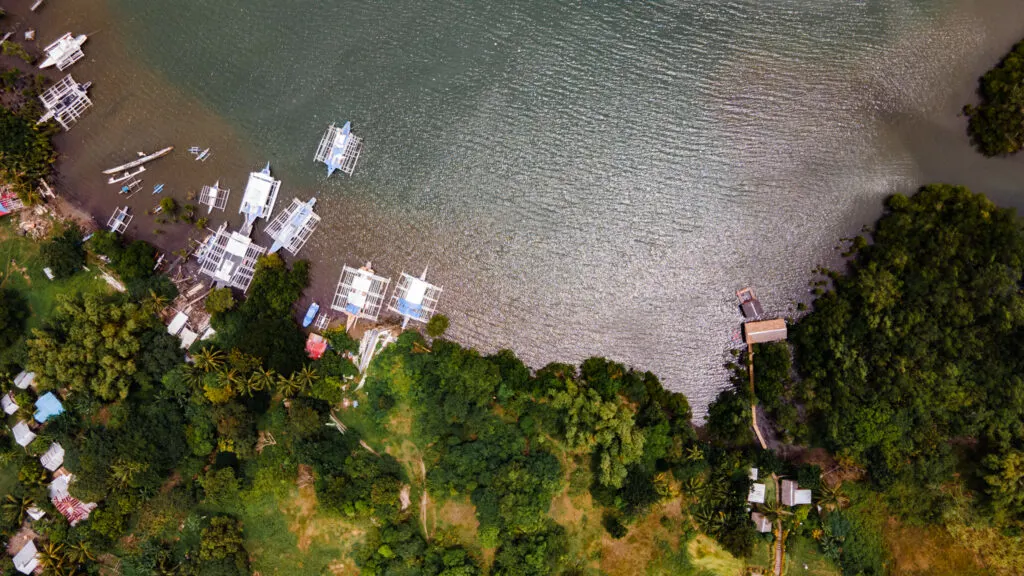
Marine habitats, especially coral reefs and the mangroves, are also facing significant losses due to coastal development and climate change, exacerbated by the effects of human activities. These adversities have turned areas of this diver’s paradise into marine wastelands; bleached corals and devoid of the life that once flourished.
The scenario underscores a pressing need for stringent conservation measures, sustainable fishing practices and collaborative efforts to restore and preserve the underwater splendor of the Philippines. A splendor that many rely on for their livelihood throughout the island nation.
After diving in some of the most incredible sites in these Filipino waters, we made our way to our final destination: Negros Oriental. A remote location in the Central Visayas region and bordered by the Sulu Sea, Negros Oriental is known for its natural landscapes of mountains, beaches, mangroves and coral reefs.
We were in this unique corner of the world to meet with Marine Conservation Philippines (MCP). MCP is a nonprofit that brings together community leaders, government, fisheries, volunteers and expert-level women in science and diving. This collective is working to show what’s possible when humans come together around a shared vision for the future.
What is Marine Conservation Philippines?
Standing as a beacon of hope amidst the ongoing challenges in the region, MCP seamlessly intertwines education, volunteer participation and marine-based research, embodying a multi-faceted approach to conservation.
In the heart of MCP’s mission lies a comprehensive citizen science program, where volunteers from across the globe converge to partake in essential data collection through scuba diving and marine monitoring training.
MCP’s scientists facilitate this work by meticulously analyzing their collected data to gauge the health of the reefs and the sustenance provided by Marine Protected Areas (MPAs). Local stakeholders and decision-makers then use this invaluable information to augment MPA management and bolster coastal resource protection.
The organization’s accomplishments thus far are just as impressive as its trajectory for what’s to come. From the inception of baseline marine surveys conducted by women like Bárbara Villamarin, a staffed Oceanographer, to their relentless efforts in community outreach, ocean plastics mitigation and mangrove forest rehabilitation, MCP’s multifaceted approach is creating consistent, short- and long-term impact.
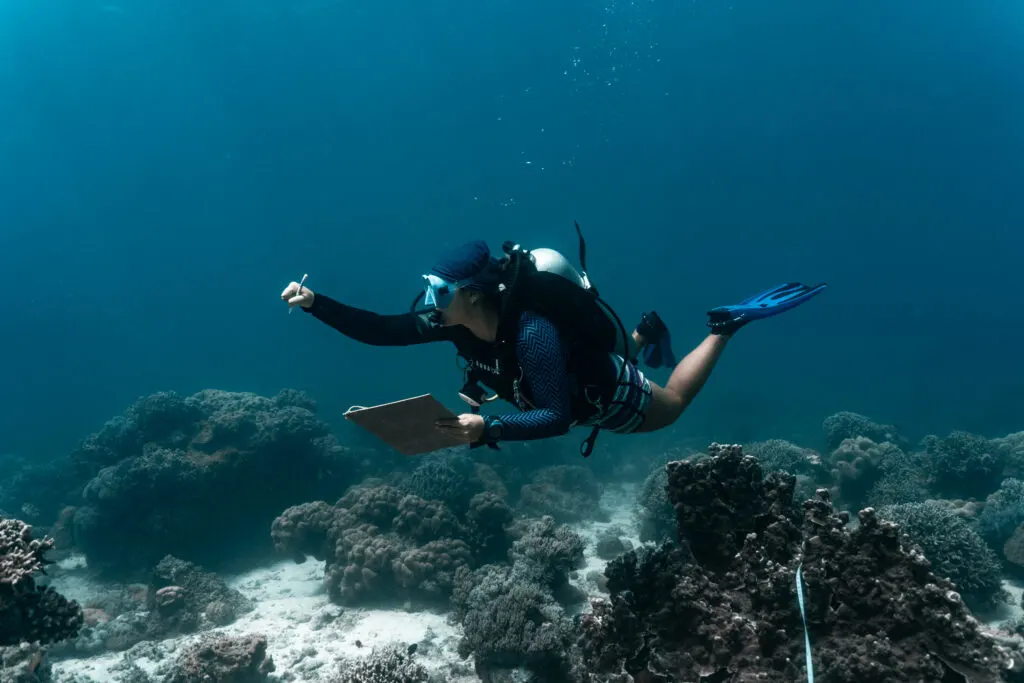
The Edges of Earth team was able to take a deep dive into all the different facets of this organization. Our team lived life like one of the volunteers on site at their homegrown basecamp. We wanted to learn what it takes to be on the frontlines of ocean conservation alongside some of the most die-hard and passionate people we’d ever met.
Life on the Frontlines of Conservation
Ocean conservation is a field marked by its complexity. Various stakeholders, each with unique perspectives and interests, are heavily involved. Balancing the need for preservation with the livelihoods of those dependent on marine ecosystems is one of the challenges we got to explore first-hand in Negros Oriental.
The intersection of ecological, economic and social impacts requires not just attention, but a collaborative and adaptive approach. Shadowing MCP’s dive and science teams gave us a glimpse into exactly what can be done to bridge gaps and solve some of these complex challenges. Challenges that often hit the most remote communities the hardest.
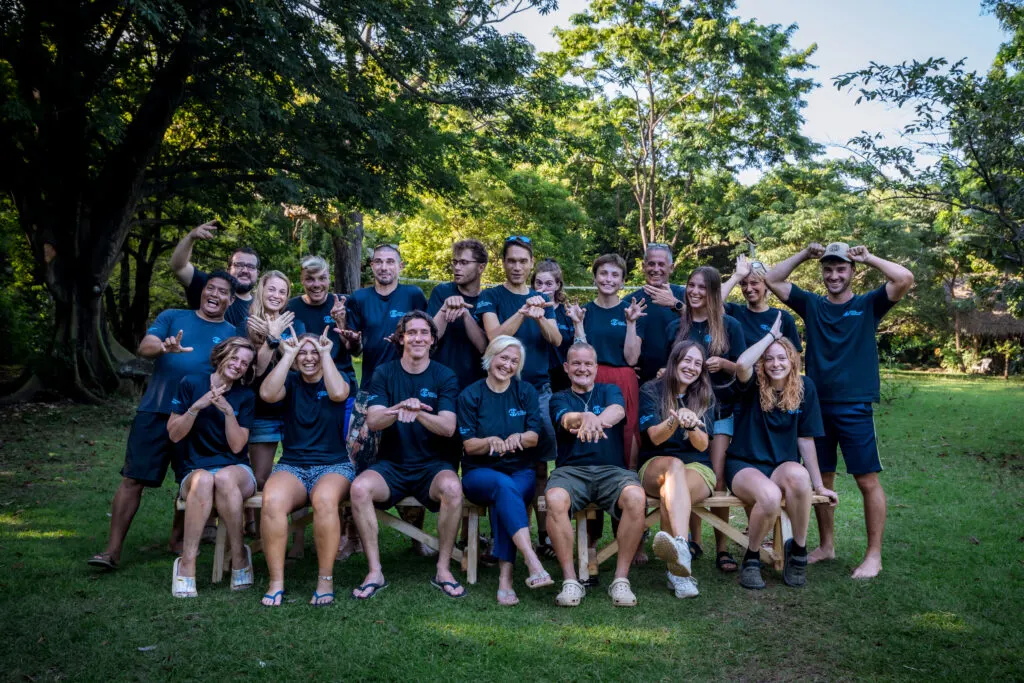
But before this progressive work can be tackled, capacity building is where each volunteer must begin, regardless of their concentration or area of expertise. MCP fosters all the necessary learning needed to successfully conduct the required field work.
This includes diverse focus areas like dive training, data analysis training, student scholarships and emergency preparation courses. As you can imagine, this is a lot of effort for MCP and those willing to upskill for the cause. There needs to be some serious commitment to make this happen on both sides.
To learn more about how it works here, we met with Bea Nodado, a sponsored, local diver in the midst of her Instructor Development Course with MCP. We uncovered how passion is the lifeblood of MCP, and why this group has been so successful over the years navigating the complexities.
The Future’s Looking Bright
Bea’s journey to marine conservation is as unexpected as it is inspiring. She wasn’t your typical ocean-obsessed child, drawn to the sea at a young age. Starting an academic journey in engineering, she realized quickly this was misaligned with where she wanted to go with her life. A hiatus from academia allowed her to reflect and reassess. She started to see the ocean’s dire state first hand, leading her to enroll in a marine biology undergraduate program in 2019.
This shift introduced Bea to the intriguing and often underestimated challenges of the ocean. She was captivated by how little is known about her own backyard. Bea became impassioned by the potential impact of uncovering and sharing this hidden knowledge – especially with regards to new species. However, the pandemic interrupted her studies, marking another pivotal moment to pause and reflect. This reaffirmed sitting idly by was not an option.
This interruption ignited, and perhaps even catalyzed, Bea’s passion for marine research. The central question for her became not just about what data could be collected. She wanted to know how this data could be effectively and sustainably captured. This exploration naturally led her to scuba diving, an essential skill for anyone serious about in-depth marine research.
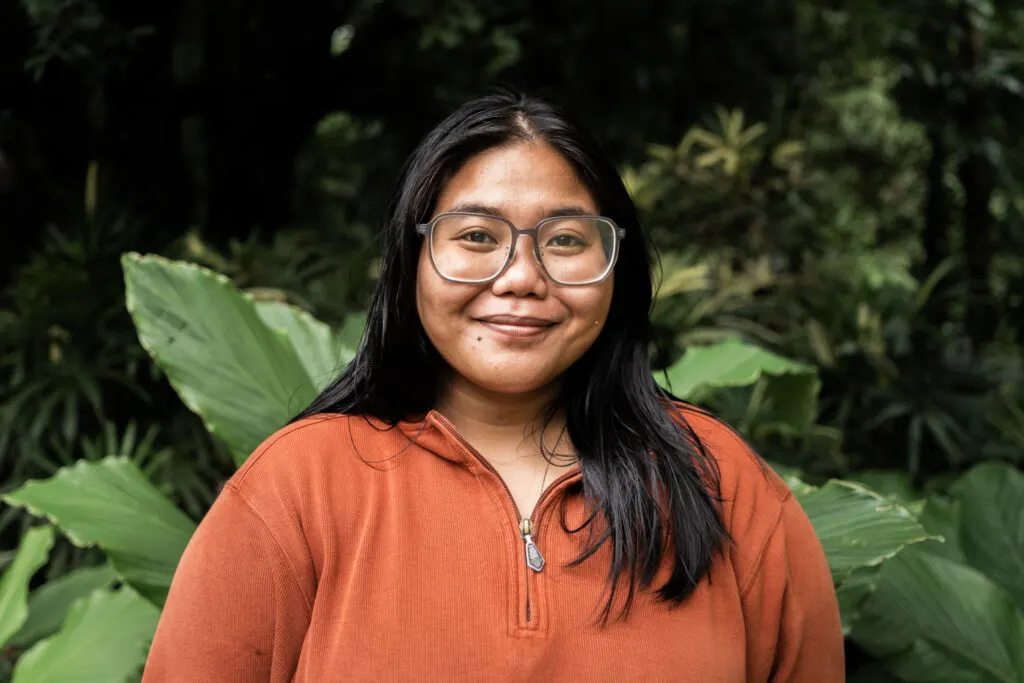
And with that, Bea’s involvement with MCP came together serendipitously. MCP not only recognized her passion for her home ocean in Negros Oriental, but also wanted to help her develop her skills as a diver. She moved from open water diving to rescue diving in only a matter of months.
By the time we arrived, she was getting ready for instructor certification. And today, we’re happy to report that she has passed her coursework. Bea is now interning with MCP to get the necessary experience as a scuba instructor.
Discovery, Education, and Conservation
In her role at MCP, Bea is intricately involved in ongoing surveys of substrate, fish and invertebrates. The collection and analysis of this data is vital, as it informs Local Government Units (LGUs) and aids in making educated decisions, including the identification and establishment of MPAs.
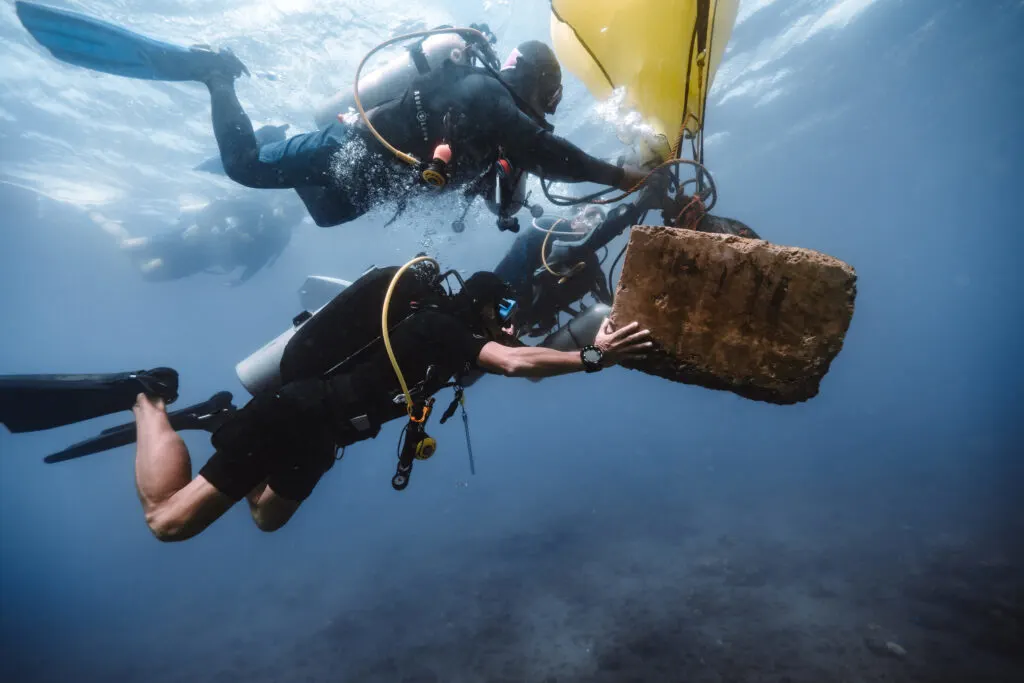
Bea is also an avid proponent of a fish mapping app, currently under development by one of her professors. The app will bring a citizen scientist approach into the hands of everyday fishermen. This development will further enable them to identify and understand commercially important fish species in the region.
For Bea, the purpose lies where discovery, education and conservation all come together. She is not just passionate about contributing to the discovery of new species, but is equally committed to amplifying and spreading knowledge about marine conservation and how to make it your life’s work.
The Community is Everything
There were 15 volunteers onsite when we were living on MCP’s basecamp, and we heard story after story like Bea’s.
With an introduction to diving, they all had fallen in love with what they were seeing beneath the surface. The more dives, the more they realized they had to find a way to contribute to its protection. In some cases, these women upended their entire lives to make this career shift. In other cases, they were harnessing the skills they had to make a more seamless transition. And that’s what landed each one at MCP.
But it wasn’t just the sponsored divers or volunteers we were getting to know. We also got a deeper understanding of the Negros Oriental community leaders that were directly affiliated. Community projects anchor MCP’s mission, illuminating the intrinsic link between environmental and community well-being.
Initiatives range from Summer SeaCamps aimed at engrossing local youth in marine conservation to alternate livelihood projects. These include efforts such as mangrove rehabilitation and planting.
The Mangrove Conservation Walk
We met Evelyn Bucad – a woman at the forefront of the revitalization efforts for the Mangrove Conservation Walk in Barangay Siit, Siaton, Negros Oriental. As the acting team leader of the Palinpinon Palayuhan Siit Multi-Purpose Cooperative (PAPSIMCO), Evelyn has played a pivotal role in transforming this stunning nature reserve into what it is today.
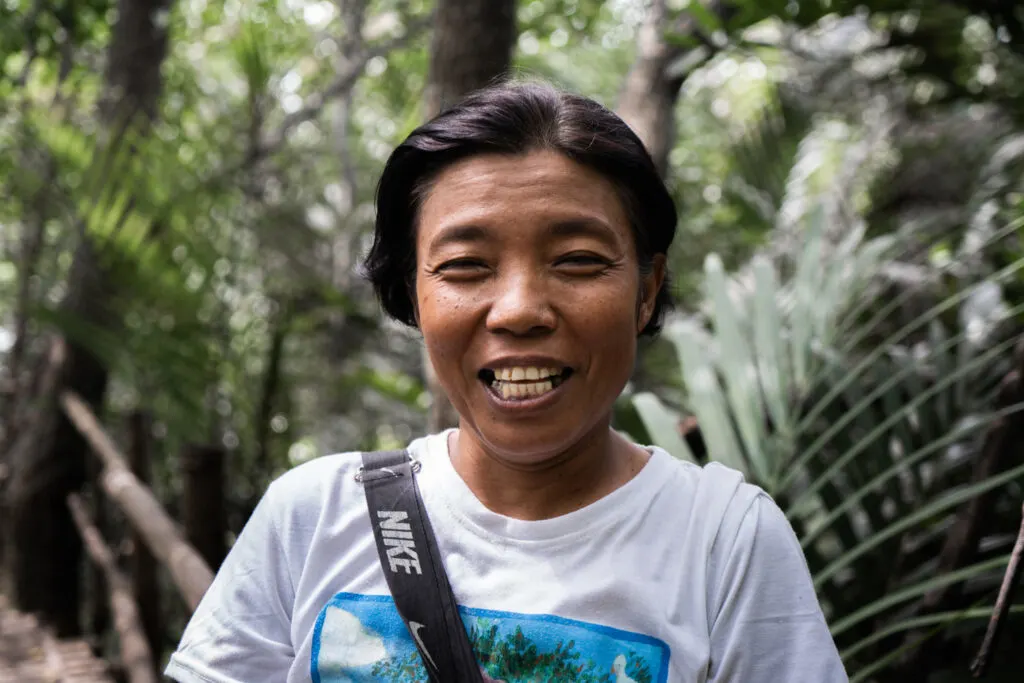
Evelyn shared insights into how the mangrove evolved from a targeted destruction zone into a tourist attraction. Ultimately, it became an educational experience. In collaboration with MCP, PAPSIMCO worked to construct a 500-meter bamboo boardwalk amidst the lush six-hectare mangrove forest. The idea was to make it more accessible for those learning about marine ecosystems.
Why? This mangrove hosts 28 of the 32 plant species found in the Philippines, including the endangered Camptostemon Philippinensis, endemic to the country. It’s about as important as anything can get when it comes to the natural wonders of the Philippines!
Returning to the Mangroves
Evelyn has been obsessed with the mangrove ever since she was a girl. She and her mother would spend countless hours kayaking the area. They would observe the fish, shrimp, crabs and birds that live in it. While working in the city of Manila in her 20’s, she found her way back to the mangrove. She had become aware of its destruction through illegal fishing, poaching and deforestation. Her call to action was clear.
With tears welling in her eyes, she recounted how much work, time and effort it’s taken to revitalize the mangrove and make its safety and health a priority within her community and beyond. The thought of potentially losing this special place led to her devotion towards protecting and fighting for it. This mission has appointed her the forever custodian, guardian and educator of the mangrove.
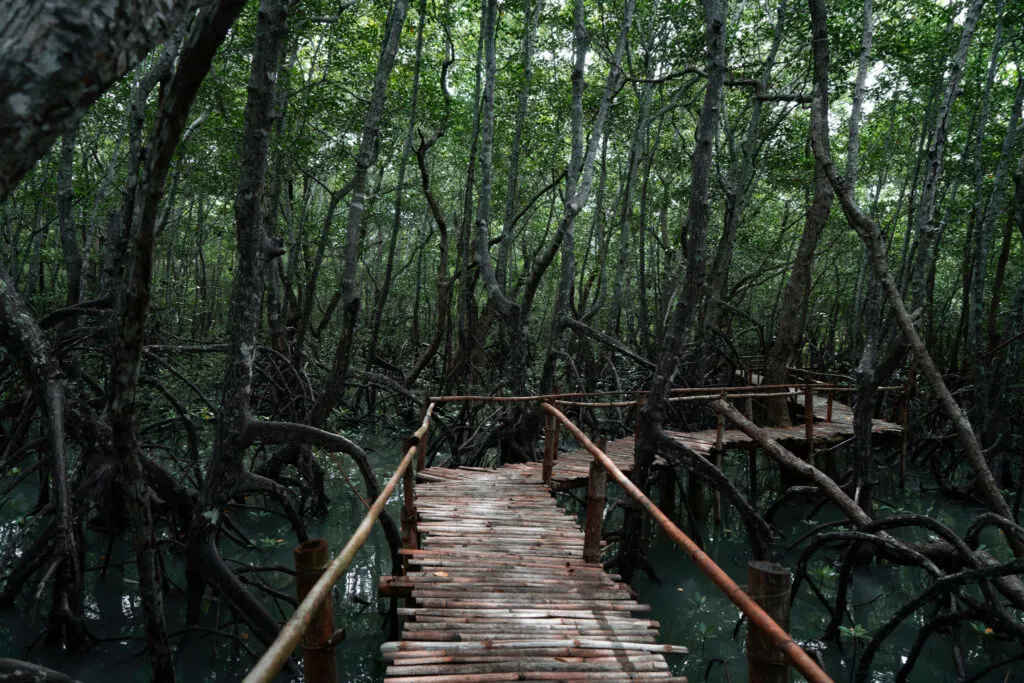
Today, Evelyn and her team have seen the success of the boardwalk first hand. The project is now known as Tambobo Mangrove Conservation Walk. Evelyn’s commitment to this rich ecosystem goes hand-in-hand with her vision of transforming it into an educational site. She knows all too well the need for strict regulations to safeguard the mangrove and wildlife while allowing those interested to explore and appreciate this critical destination in Negros Oriental.
A Collective Effort
Perhaps it was the bunk dorm style of living in this community, or the collaborative nature of the community itself, but we left the MCP basecamp feeling like anything is possible if you have the right people sitting at the decision making table. The week at MCP wasn’t just an immersive experience into marine biology and conservation. It was a profound lesson in the power of community, diversity and unity.
We saw the possibilities when gathering people with alternate perspectives, varied expertise and different lifestyle needs to unite around a common goal. Each individual brings a unique set of skills, insights and experiences that enriches the collaborative effort. At MCP, we witnessed the synergistic effect of this diverse collective. Each member’s contribution is valued and integral to the overall success of these critical conservation initiatives.
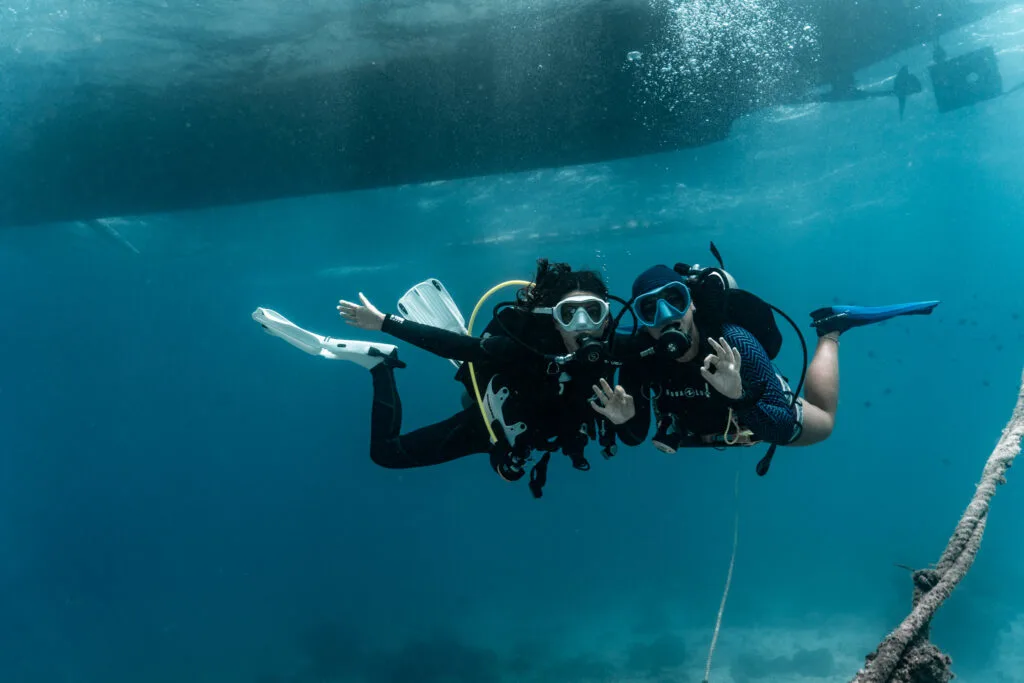
The spirit of camaraderie, the exchange of knowledge and the shared passion for the marine world at MCP created an environment where progressive solutions and innovative ideas flourish—regardless of age, orientation, background or skills. With each dive, discussion and discovery, the possibility of a restored and resilient ocean became not a distant dream, but an attainable reality.
How can you get involved?
If you’re curious about how to get into marine science, research and conservation fields or want to enhance your diving or simply want to contribute for a period of time, look to volunteer programs like MCP. Opening this door could lead to significant changes professionally or reroute how you spend your free time.
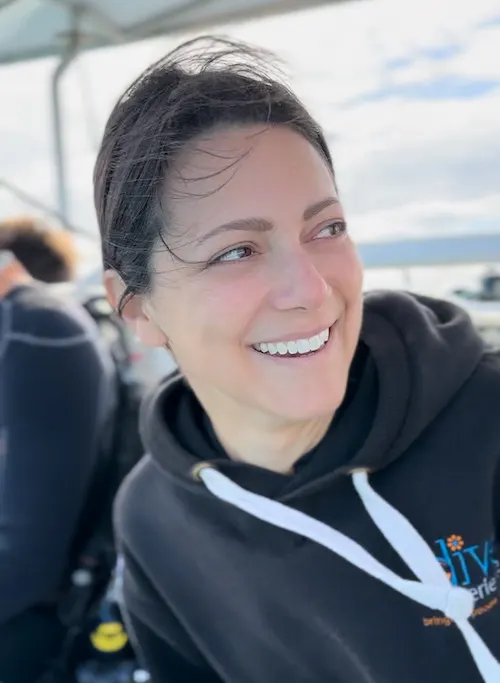
About the Author
Andi Cross is a growth strategist, professional scuba diver and lead of the Edges of Earth expedition, highlighting stories of positive ocean progress and how to explore the world more consciously. To keep up with the expedition, follow the team on Instagram, LinkedIn, TikTok, YouTube and their website.

